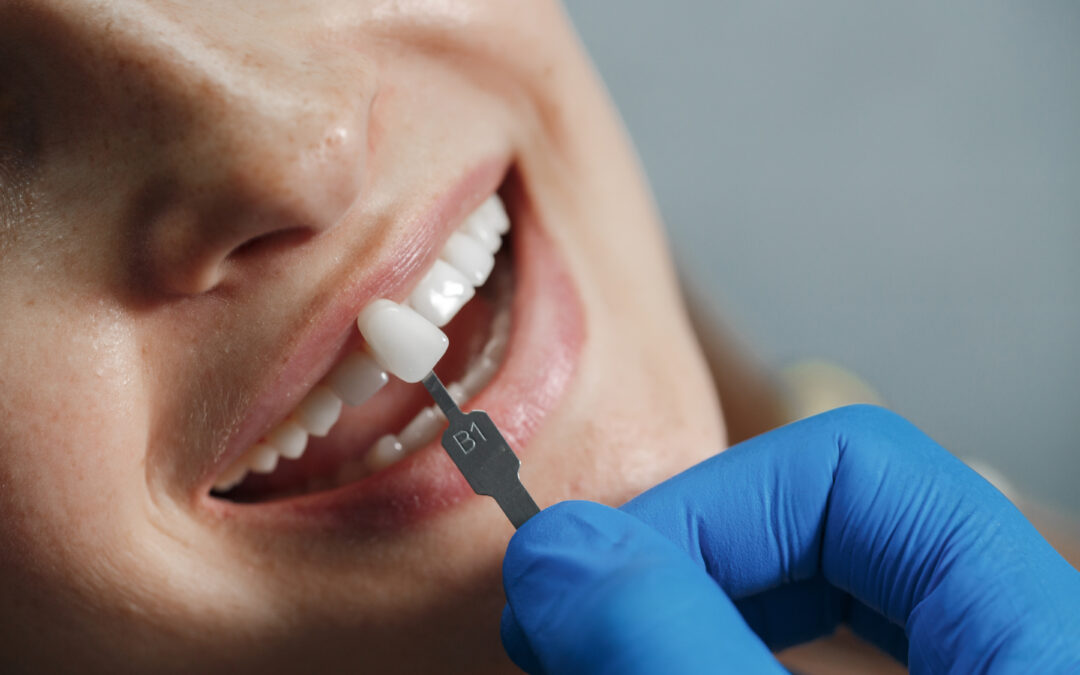Porcelain Crowns
A crown is a restoration that covers the tooth in order to restore it to its normal shape and size. It can also strengthen and improve the appearance of the tooth. Crowns are necessary when the tooth substance has been damaged at such a grade, that it cannot be restored by conventional restorations (fillings). If a tooth is cracked, a crown holds the tooth together to absorbe the chewing forces at the whole tooth surface beneath, so that it prevents further fracturing of the rest of the tooth. Crowns are also used to restore partially fractured teeth or to cover badly shaped or discolored teeth.
Full porcelain crowns (All-ceramic crowns)
Below is a list of a few different types of all-porcelain crowns:
Zirconium crowns
Zirconium crowns have a core of very hard and strong porcelain, on top of which normal porcelain is layered until the crown has been given its final shape and aesthetics. Dental zirconia is not pure zirconium oxide but a mix of zirconium oxide and yttrium oxide. The addition of yttrium makes the crystal structure of zirconium oxide stable at room temperature. The material is therefore, more correctly called yttrium stabilized zirconia (YSZ).
In the dental laboratory, the thin zirconia core is designed in a computer program and thereafter milled through CAD/CAM out of an industrially produced block of yttrium stabilized zirconia closely matching the basic color of the tooth. As the core is machine-cut from a monochromatic block of zirconium, these one-colored restorations depend on staining of the core and the layering of the normal porcelain on top of the core to have aesthetic value.
IPS e.max crowns
The material in an e.max crown is lithium disilicate. It is a glass-ceramic material, which allows for a more aesthetic end-result compared to a zirconium crown. The over-all strength of an IPS e.max crown is approximately half of the strength of a zirconium crown. In the CAD/CAM version of an e.max-crown, the crown is milled out of a block of lithium disilicate and stained to its final shade. Lithium disilicate is suitable for the fabrication of not only single crowns but also other aesthetic high-strength single tooth restorations like veneers and inlays. The material can also be used for short bridges in the front and premolar regions.
IPS Empress crowns
The empress crown is made of a leucite-based glass-ceramic material. The material has a very lifelike appearance due to its high translucency and has a flexural strength that is half of that of an e.max crown.
Metal-porcelain crowns
You may have seen people with crowns that have a dark line at the gum line of the crowns. This is usually caused by the metal margin of what is called a porcelain fused to metal crown (PFM-crown). These crowns have a metal core, on top of which porcelain has been fused. The metal is first masked with an opaque layer of porcelain to give it a more tooth-like color, and then consecutive layers of normal porcelain are used to build up the final shape. The metal used is semi-precious or precious such as gold. Metal porcelain crowns are used when there is a need for high strength, normally in the molar region.
A PFM-crown can be made in such a way that the gum-portion of the crown has no metal at all. Instead this portion of the crown is made in porcelain. Therefore, only porcelain can be seen.
If you have a tooth that has become damaged as a result of excessive decay, a trauma, or a large filling, a porcelain crown can restore both the look and the function of that tooth. Crowns are one of the best ways to restore your damaged teeth without sacrificing the appearance of your smile.
If at the consultation, it turns out that it is not possible to restore a tooth with a “white” (tooth colored) composite filling or a porcelain inlay, Dr. Mattis Mamusa at Stockholm Dental Clinic will suggest a crown.
Once the tooth has been prepared, Dr. Mamusa will take an impression of the tooth, and send it to a dental lab, where the crown will be made. While your definitve crown is being made, you will have a temporary crown set in for the meantime. The temporary crown protects the prepared tooth and keeps it in the correct position. When the porcelain crown has been delivered to Stockholm Dental Clinic in Puerto Banus (close to Marbella, Estepona and Malaga), Dr. Mamusa will bond (cement) the crown to your tooth, provided that both you and him have accepted the functional and aesthetic result of the crown. The crown fits on the top of the tooth, covering the remaining portion of the natural tooth structure, restoring the look and function of the tooth.
During the bonding procedure, your dentist will either use a special high-intensity light to cure the bonding agent (cement) to fix the porcelain crown to the natural structure of the tooth, or the cement will cure alone after having initiated the curing process by an activator before.

